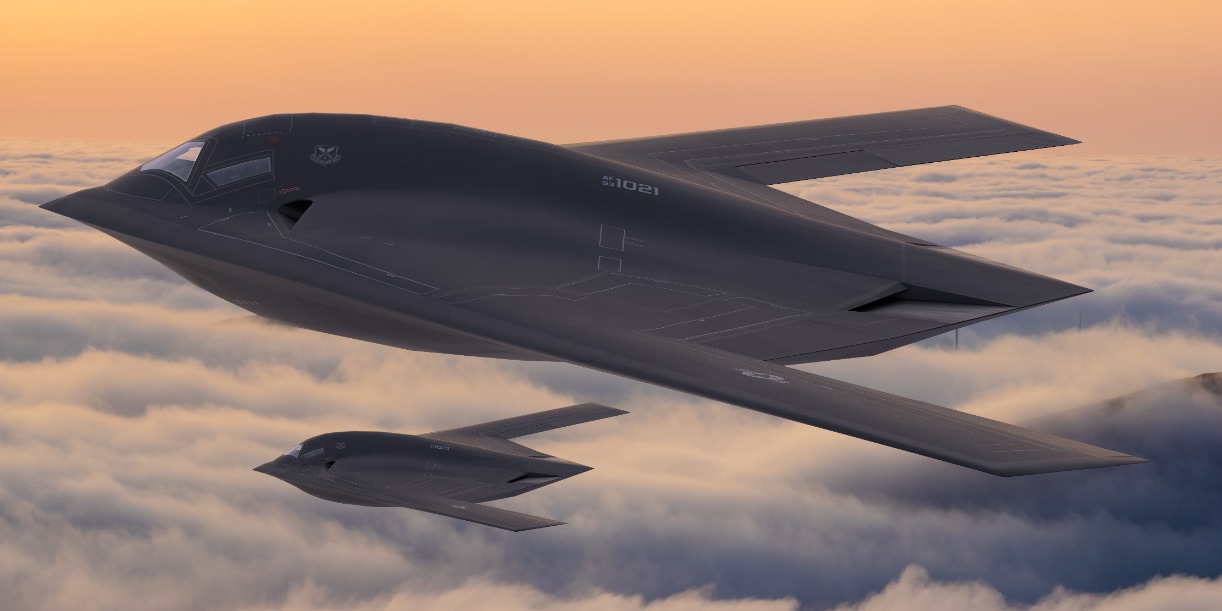B-21 Raider Has 1 Advantage No One Could Imagine (Not Stealth)
Designed to replace the B-2 Spirit, the B-21 represents next-generation engineering that could be decisive in air warfare. This is a major advantage no one saw coming.
Summary and Top 4 Points You Need to Know: As America faces growing global threats from nations like China and Russia, its military is stretched thin, struggling with inefficiencies and rising costs.
-However, the B-21 Raider stealth bomber offers a glimmer of hope. Designed to replace the B-2 Spirit, the B-21 represents next-generation engineering that could be decisive in air warfare. This is a major advantage no one saw coming.
-While originally deemed costly, with a $4.2 billion program, the Air Force’s Rapid Capabilities Office (RCO) has cut costs, aiming for more affordable production.
-With its advanced stealth and upgradeable features, the B-21 could reshape the strategic balance in America’s favor.
How the B-21 Raider Could Tip the Balance Against China
America is under siege. Its position atop the international system is fading fast. As the US endures a period of relative decline, multiple threat actors, notably China and Russia, as well as regional threats, like Iran and North Korea (even Venezuela), are all jockeying to break the American juggernaut.
It seems to be working.
The US military is stretched to its breaking point, despite consuming vast amounts of financial resources that the United States can no longer afford to bear. Even with all the money pouring into the elephantine defense establishment, the US defense industrial base is a sclerotic, inefficient mess.
But there is one bright spot. And that hope is key because it might prove to be a decisive factor in any air war against a near-peer competitor, such as China.
The B-21 Bomber is Amazing
The B-21 Raider was designed as the replacement for the B-2 Spirit long-range stealth bomber. It’s more than just a follow-on, though. The B-21 is in a league of its own. It’s a truly magnificent piece of next-generation engineering that, if it could be mass produced in an affordable and timely manner, would be decisive against any and all foes.
The Air Force chiefs say the fleet needs a massive number of B-21 Raider units for it to truly be worth its cost. However, in recent months, the Air Force has conceded they’d accept fewer numbers, closer to 150. Of course, all this is wishful thinking, given the cost of the bird. At $750 million per plane, for an overall program cost of $4.2 billion, the likelihood that the Air Force would ever get 300, let alone 150 units, was laughable.
Yet, the Air Force is clearly prioritizing this bird—and trying to signal to legislators that they will keep the costs down as best they can (which is rare, considering the amount of money that is simply wasted in the defense sector).
For example, the normal acquisition channels at the Defense Department have nothing to do with developing and procuring the B-21. Instead, the Air Force’s Rapid Capabilities Office (RCO) procures these birds.
The Importance of the Rapid Capabilities Office (RCO)
The RCO was established to cut through the bureaucratic bloat that dominates the Pentagon’s usual acquisitions offices. Its primary mission is to deliver capabilities to the warfighter at an accelerated pace, typically in response to emerging threats or urgent operational requirements that cannot be met through standard acquisition channels.
Therefore, it should tell you how seriously the Air Force takes the B-21 program and how significant of a program it could be in terms of fundamentally reordering the balance of power in America’s favor, particularly against foes like China.
At the RCO, they prize speed and flexibility (they have the authority to make decisions quickly). The office usually leverages cutting-edge tech, whether classified or advanced development projects, to create new capabilities that put US rivals back on their strategic heels.
This gets us back to the B-21.

Managing Costs (and Expectations)
One of the RCO’s involvement in the B-21 program has been to cut that $4 billion price tag in half, down to $2.7 billion. What’s more, unlike the typical Air Force process, the B-21 Raider now has two prototypes, both designed to be “expandable and upgradeable.” Indeed, these birds will become part of the actual B-21 fleet when it is inevitably built, defying standard Air Force operating procedures.
Interestingly, the older B-2 Spirit, the bird that the B-21 is slated to replace, is significantly more expensive than the B-21. Whatever other programs, such as the Next-Generation Air Dominance (NGAD) program, the Air Force’s ill-advised sixth-generation warplane project, the B-21 Raider needs to take priority. The Air Force has not only built a truly next-generation long-range stealth bomber that will run circles around its foes but is also doing it in relatively cost-effective ways.
Author Experience and Expertise: Brandon J. Weichert
Brandon J. Weichert, a National Interest national security analyst, is a former Congressional staffer and geopolitical analyst who is a contributor at The Washington Times, the Asia Times, and The-Pipeline. He is the author of Winning Space: How America Remains a Superpower, Biohacked: China’s Race to Control Life, and The Shadow War: Iran’s Quest for Supremacy. His next book, A Disaster of Our Own Making: How the West Lost Ukraine, is due October 22 from Encounter Books. Weichert can be followed via Twitter @WeTheBrandon.
All images are Creative Commons or Shutterstock.
From the Vault
Russia Freaked Out: Why the U.S. Navy 'Unretired' the Iowa-Class Battleships
Battleship vs. Battlecruiser: Iowa-Class vs. Russia's Kirov-Class (Who Wins?)


